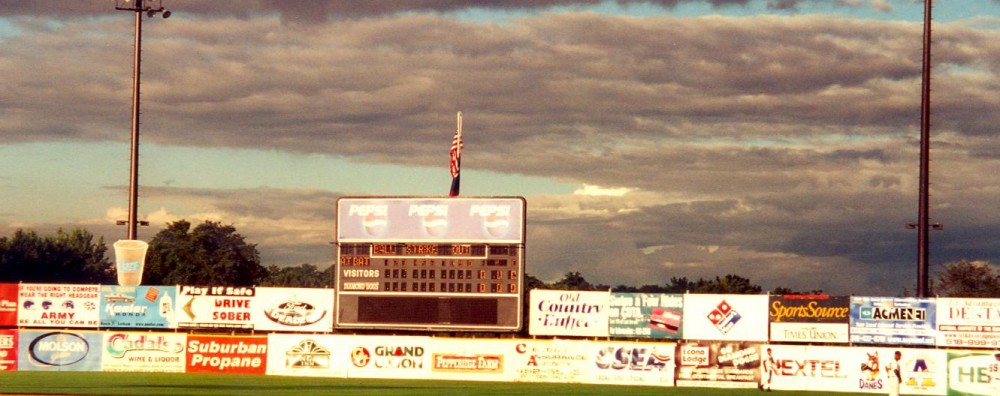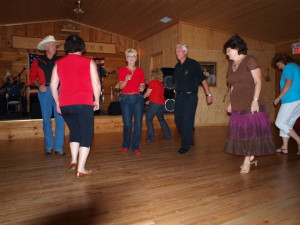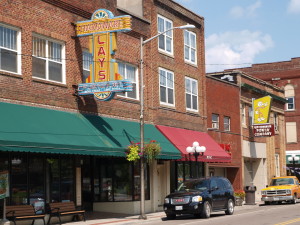Foul balls, as we all know, are as ubiquitous to baseball as hotdogs and homeruns. When they’re hit deep into the bleachers, we see the kids (old and young) scramble across benches and aisles to latch onto that treasure. We also see fans reaching out across fences and barricades attempting to snatch the ball from the air, or off the ground–sometimes upending the reacher onto the field. We all get a thrill seeing that ball bounce close by (at least far enough away not to hit us) and perhaps having that urge to run for it. Of course, getting hit by a foul ball is no fun, especially if you don’t even get to keep the ball afterwards. Somehow that’s just not fair! But having that souvenir ball from any park–major or minor, triple A or rookie league–seems to be an intricate part of the whole baseball experience.
When we first began our trips to minor league ball parks, we didn’t think much about the idea of chasing down foul balls. It’s a kids’ pass time and we always sit behind home plate where the netting normally shields us from the dangers of an errant ball–for the most part. (Of course, there have been times when a pop-up has soared over the net into our “protected” area. Ginny ducks under her scorebook and Dan uses his hat to try to catch the ball.) So, it was much to our surprise and pleasure when we discovered our first foul ball.
We were in Durham, North Carolina, at the AAA league Bulls’ stadium. It had just opened that year and it was a treat to see such a beautiful new park. We had seen a great game–the Bulls had defeated the Prince William Cannons 5 to 4–and we were just leaving the park. The exiting crowd was thin since the park was having fireworks and we were leaving before they started. We strolled across the street that runs in front of the park, stepped up onto the sidewalk, and there it was: our first souvenir foul ball. It was lying in the gutter between a parked car’s rear tire and the curb. Dan saw it first and gasped, “Look! A ball!” He was on it before Ginny knew what was going on–just like one of those kids in the stands, except that he didn’t have to fly over benches to get to it. The ball was definitely not a practice ball. It was too new and clean for that. It was marked with the official stamp of the Carolina league and was now ours. And that’s when we got hooked. (The Bulls were still in the single A Carolina League that year. The following year they moved up to the triple A International League.)
Now when we visit a new stadium, we always show up early for the game so that we can walk around the outside area to see if there are any errant foul balls that have been left behind by the kids who also scrounge around during the games. Some areas surrounding parks are easily accessible, allowing us to walk the entire perimeter. Others are fenced off in certain areas and we can’t make a circle around the park. We have to just make do with where we can go. But we’ve found foul balls in many, many areas close to many, many parks. In fact, Ginny has had her hands scraped and scratched many times by poking them into hazardous areas. There was even one time that Dan wanted a foul ball that had ended up on the other side of a chain link fence across from the park and he convinced Ginny she could fit her hand under it to grab the ball. Of course, this was after a night game and it was rather dark around the area where the ball lie. So, Ginny, not one to be squeamish, got down on the sidewalk, wiggled her hand under the fence–right into a patch of thistle. Not daunted, and saying an assortment of words that would make a sailor proud, she managed to get a finger onto the ball, roll it to the fence, and coax it under. She came back to the car, picking thistles out of her hand.
In Las Vegas, we managed to scrounge up three foul balls from a grassy area behind the park after a day game by using a long stick to roll the balls to within grasping distance. Of course, we were sweating after that one. It was 104 degrees at 7 p.m. We have also dug balls out of rushing creeks, from under thick bushes, down gullies, out of ditches, and from under cars. But one of the best times we have found a foul ball was in Reading, Pennsylvania. We had gone to pick up our tickets and it was raining so hard we could barely see. As we drove away from the park, which is in the middle of the downtown area, we passed an alleyway between two buildings. Dan shouted to Ginny to go around the block (she was driving). She did, although she thought he was crazy–why drive around in this rain any more than need be? When we reached the alleyway, he told her to turn into it. There, smack in the middle of the road, was a foul ball. Ginny slowly drove up to it so that the ball would be just below Dan’s now-open door. He reached out into the pouring rain and grabbed the ball. Sure enough, it was stamped with the Eastern league seal, to which the Reading Phillies belonged and was quite waterlogged. But we had another ball to add to our growing collection.
We keep all these balls in a type of shrine area where we also have signed baseballs by old-time players. Dan also keeps some of the balls on his bookshelves at work. They’re fun to look at and to remember just how we retrieved them and where. Of course, our young nieces and nephews will shake their heads and think how crazy their aunt and uncle were when it comes time for them to clear out all our stuff after we’re gone. In the meantime, we’re having fun collecting our mementos.


